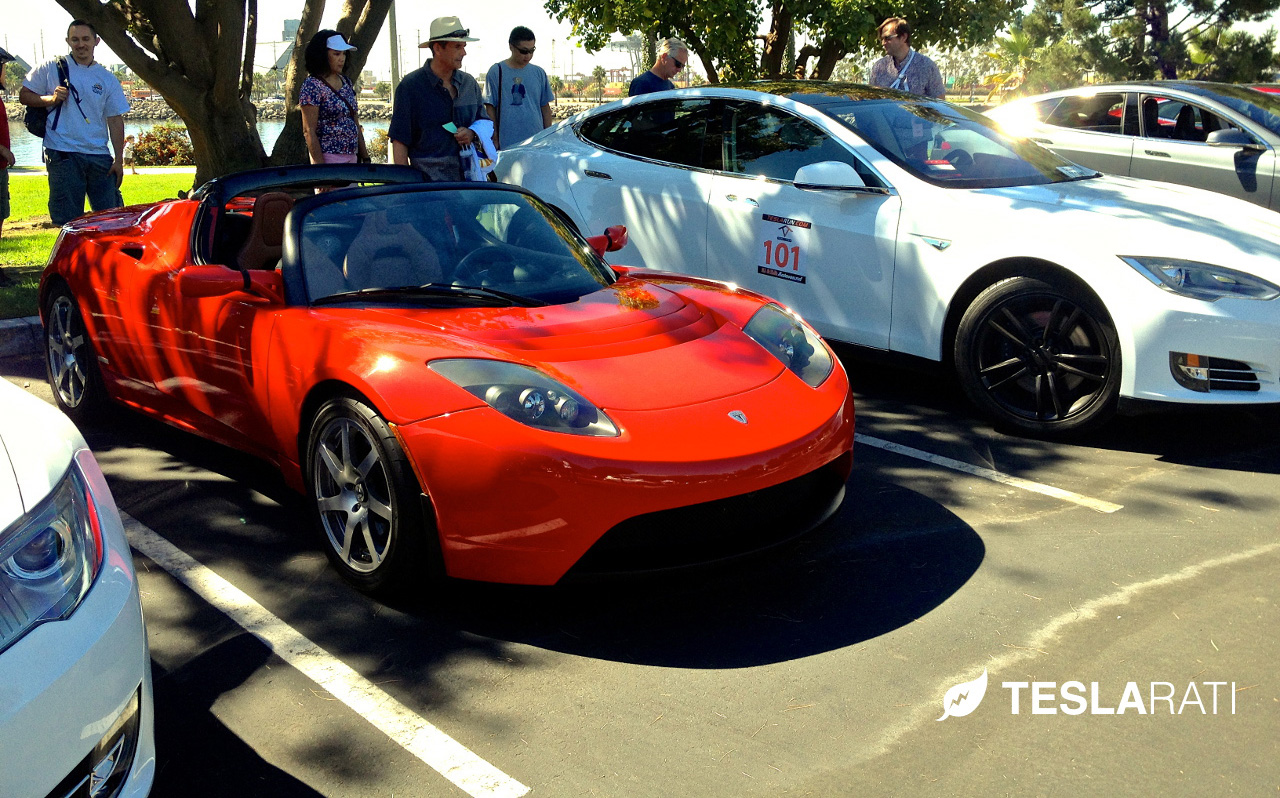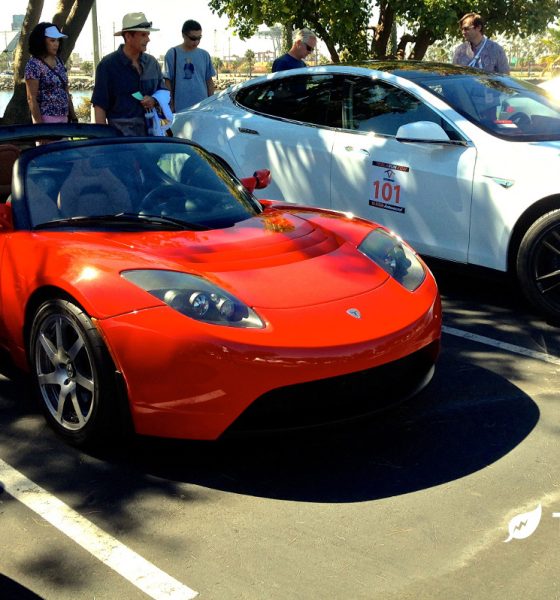

News
History Lesson: The evolution of the electric car [Infographic]
The Institute for Local Self-Reliance (ILSR) recently released an in-depth report on electric vehicles. The ILSR’s report, Choosing the Electric Avenue – Unlocking Savings, Emissions Reductions, and Community Benefits of Electric Vehicles, authored by John Farrell, is a treasure trove for those looking to learn more about electric vehicles. One particular section of ILSR’s report provides a helpful history lesson to better understand the evolution of the electric car.
Farrell writes, “Electric cars aren’t new. At the dawn of the U.S. auto industry in the late 1800s, electric vehicles outsold all other types of cars. By 1900, electric autos accounted for one-third of all vehicles on U.S. roadways. Of the 4,192 vehicles produced in the U.S. and tallied in the 1900 census, 1,575 were electric.”
Some well-recognized names were heavily involved with electric cars early on. “Electric vehicles sales remained strong in the following decade and provided a launchpad for fledgling automakers, including Oldsmobile and Porsche, that would go on to become industry titans. Even Henry Ford partnered with Thomas Edison to explore electric vehicle technology. Battery-powered models, considered fast and reliable, sparked a major transportation renaissance.”
 |
Above: Porsche’s first car in 1898, the P1, was electric (Source: Upworthy via Porsche)
That said, electric cars fizzled out as gas-powered cars gained prominence: “the momentum shifted over the first few decades of the 20th century, as the electric starter supplanted hand-cranking to start gas engines. The prices of those models dropped. A network of inter-city roadways enabled drivers to travel farther — more easily done in those days in gas-powered vehicles — and the discovery of domestic crude oil made gasoline cheaper. The internal combustion engine gained a superiority that would persist for decades.”
Fast forward: “Nearly 100 years later, a second wave of electric vehicles arrived, driven by California’s zero-emissions vehicle policy in the late 1990s. Unfortunately, it faltered. The enthusiasm of electric vehicle owners couldn’t overcome the reluctance of cash-flush automakers to invest in alternatives to gas-powered vehicles. Automakers also mounted successful lobbying efforts to weaken the zero-emissions vehicle policy.”
Above: Top 8 electric cars ahead of their time (Youtube: FIA Formula E Championship)
This short-lived second wind for electric cars came to an abrupt end when, “In 1999, General Motors ended production of its own promising electric vehicle, the EV1, after just three years. The automaker removed all 1,100 models from the roads, despite outcry from their drivers. It blamed its pivot away from electric vehicle technology on the EV1’s 100-mile range and the high cost of development compared to sales. Oil giants, still powerful political lobbies, also opposed electric vehicle innovation.”
However, it finally appears that the electric car is here to stay (and thrive) at last. “Nearly two decades later and 120 years after its introduction, the electric car is making an unmistakable comeback. This time, it’s aided by better technology as well as environmentally sensitive consumers and policymakers looking to supplant fossil fuel use with renewable electricity.”
The ILSR’s report concludes that much of the electric vehicle’s recent turnaround is due to the efforts of Elon Musk and Tesla. But, it’s not just Tesla, the past few years have been encouraging industry-wide: “Sales of electric cars are growing… In just the first quarter of 2011, for example, more electric cars were sold than General Motors leased throughout the entire 1990s. In 2016, U.S. auto dealers recorded 158,000 plug-in vehicle sales — up more than 30 percent from 2015. The trend shows no signs of stopping.”
For a timeline of EV milestones dating all the way back to 1832, be sure to check out this handy infographic…
Infographic
 |
===
Note: Article originally published on evannex.com, by Matt Pressman
Source: Institute for Local Self-Reliance / Infographic: Nikkei Asian Review

News
Tesla FSD fleet is nearing 7 billion total miles, including 2.5 billion city miles
As can be seen on Tesla’s official FSD webpage, vehicles equipped with the system have now navigated over 6.99 billion miles.

Tesla’s Full Self-Driving (Supervised) fleet is closing in on almost 7 billion total miles driven, as per data posted by the company on its official FSD webpage.
These figures hint at the massive scale of data fueling Tesla’s rapid FSD improvements, which have been quite notable as of late.
FSD mileage milestones
As can be seen on Tesla’s official FSD webpage, vehicles equipped with the system have now navigated over 6.99 billion miles. Tesla owner and avid FSD tester Whole Mars Catalog also shared a screenshot indicating that from the nearly 7 billion miles traveled by the FSD fleet, more than 2.5 billion miles were driven inside cities.
City miles are particularly valuable for complex urban scenarios like unprotected turns, pedestrian interactions, and traffic lights. This is also the difference-maker for FSD, as only complex solutions, such as Waymo’s self-driving taxis, operate similarly on inner-city streets. And even then, incidents such as the San Francisco blackouts have proven challenging for sensor-rich vehicles like Waymos.
Tesla’s data edge
Tesla has a number of advantages in the autonomous vehicle sector, one of which is the size of its fleet and the number of vehicles training FSD on real-world roads. Tesla’s nearly 7 billion FSD miles then allow the company to roll out updates that make its vehicles behave like they are being driven by experienced drivers, even if they are operating on their own.
So notable are Tesla’s improvements to FSD that NVIDIA Director of Robotics Jim Fan, after experiencing FSD v14, noted that the system is the first AI that passes what he described as a “Physical Turing Test.”
“Despite knowing exactly how robot learning works, I still find it magical watching the steering wheel turn by itself. First it feels surreal, next it becomes routine. Then, like the smartphone, taking it away actively hurts. This is how humanity gets rewired and glued to god-like technologies,” Fan wrote in a post on X.
News
Tesla starts showing how FSD will change lives in Europe
Local officials tested the system on narrow country roads and were impressed by FSD’s smooth, human-like driving, with some calling the service a game-changer for everyday life in areas that are far from urban centers.

Tesla has launched Europe’s first public shuttle service using Full Self-Driving (Supervised) in the rural Eifelkreis Bitburg-Prüm region of Germany, demonstrating how the technology can restore independence and mobility for people who struggle with limited transport options.
Local officials tested the system on narrow country roads and were impressed by FSD’s smooth, human-like driving, with some calling the service a game-changer for everyday life in areas that are far from urban centers.
Officials see real impact on rural residents
Arzfeld Mayor Johannes Kuhl and District Administrator Andreas Kruppert personally tested the Tesla shuttle service. This allowed them to see just how well FSD navigated winding lanes and rural roads confidently. Kruppert said, “Autonomous driving sounds like science fiction to many, but we simply see here that it works totally well in rural regions too.” Kuhl, for his part, also noted that FSD “feels like a very experienced driver.”
The pilot complements the area’s “Citizen Bus” program, which provides on-demand rides for elderly residents who can no longer drive themselves. Tesla Europe shared a video of a demonstration of the service, highlighting how FSD gives people their freedom back, even in places where public transport is not as prevalent.
What the Ministry for Economic Affairs and Transport says
Rhineland-Palatinate’s Minister Daniela Schmitt supported the project, praising the collaboration that made this “first of its kind in Europe” possible. As per the ministry, the rural rollout for the service shows FSD’s potential beyond major cities, and it delivers tangible benefits like grocery runs, doctor visits, and social connections for isolated residents.
“Reliable and flexible mobility is especially vital in rural areas. With the launch of a shuttle service using self-driving vehicles (FSD supervised) by Tesla in the Eifelkreis Bitburg-Prüm, an innovative pilot project is now getting underway that complements local community bus services. It is the first project of its kind in Europe.
“The result is a real gain for rural mobility: greater accessibility, more flexibility and tangible benefits for everyday life. A strong signal for innovation, cooperation and future-oriented mobility beyond urban centers,” the ministry wrote in a LinkedIn post.
News
Tesla China quietly posts Robotaxi-related job listing
Tesla China is currently seeking a Low Voltage Electrical Engineer to work on circuit board design for the company’s autonomous vehicles.

Tesla has posted a new job listing in Shanghai explicitly tied to its Robotaxi program, fueling speculation that the company is preparing to launch its dedicated autonomous ride-hailing service in China.
As noted in the listing, Tesla China is currently seeking a Low Voltage Electrical Engineer to work on circuit board design for the company’s autonomous vehicles.
Robotaxi-specific role
The listing, which was shared on social media platform X by industry watcher @tslaming, suggested that Tesla China is looking to fill the role urgently. The job listing itself specifically mentions that the person hired for the role will be working on the Low Voltage Hardware team, which would design the circuit boards that would serve as the nervous system of the Robotaxi.
Key tasks for the role, as indicated in the job listing, include collaboration with PCB layout, firmware, mechanical, program management, and validation teams, among other responsibilities. The role is based in Shanghai.
China Robotaxi launch
China represents a massive potential market for robotaxis, with its dense urban centers and supportive policies in select cities. Tesla has limited permission to roll out FSD in the country, though despite this, its vehicles have been hailed as among the best in the market when it comes to autonomous features. So far, at least, it appears that China supports Tesla’s FSD and Robotaxi rollout.
This was hinted at in November, when Tesla brought the Cybercab to the 8th China International Import Expo (CIIE) in Shanghai, marking the first time that the autonomous two-seater was brought to the Asia-Pacific region. The vehicle, despite not having a release date in China, received a significant amount of interest among the event’s attendees.








